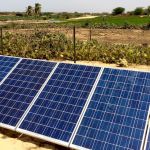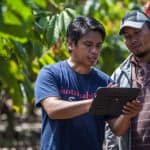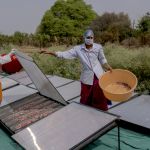Why the World’s Smallholder Farmers are Going Hungry
Yesterday was World Food Day, and as the world strives every day to meet the second of the UN’s Sustainable Development Goals – ending hunger and achieving food security – we face a strange contradiction: Half of the world’s households most affected by hunger are farmers. Ironically, these hunger-stricken farmers operate many of the 500 million smallholder farms that are critical to feeding the world as its population grows. Smallholder farms are defined as less than 5 hectares (or a little more than 12 acres), but many, especially in sub-Saharan Africa, are only the size of a large back yard in an American neighborhood.
Despite their small size, these farms are a linchpin in both ending hunger today and improving food security tomorrow. To do so, smallholder farmers need to become more productive to increase the food supply, and less poor so they themselves can afford to eat. The goal of becoming more productive is achievable. Even with the challenges of climate change, most smallholder farms have the potential to dramatically increase their yields. For example, the Alliance for a Green Revolution in Africa estimates that improving soil quality, through simple steps like using fertilizer, could enable farmers to double or triple yields.
However, taking steps to achieve these yields costs money that farmers do not have prior to harvest. So farmers can only become more productive and less poor if they have the building block critical to growing businesses of every kind: better access to finance.
Far too often, farmers are held back because they don’t make the necessary investments in their farms that will boost their yields and help them make the leap from subsistence farmers (as are 60 percent of smallholder households) to commercial smallholders. Farmers under-invest in their farms for two primary reasons: first, many lack the working capital needed to purchase better seeds and fertilizer; and second, many farmers don’t have the risk appetite to try new crop and seed varieties or plant higher-value crops.
When we speak to smallholders in sub-Saharan Africa, it’s not uncommon for farmers to say they’ll start thinking about investing in their farm beyond a core level only after they are able to meet their basic needs. To have more eggs, farmers need to buy more chickens, but investing in more chickens means using and risking money that goes toward feeding their family and sending their kids to school.
Chicken-and-egg problems like this call for financial solutions like loans for seeds and fertilizer, savings solutions that help farmers pay school fees, or insurance that enables farmers to take more risks. Traditionally, banks have had no interest in serving populations of farmers that live far from bank branches and require small transaction sizes (yielding limited revenue for the bank). Government credit schemes have also failed to consistently and sustainably serve smallholders. Even including informal lending, we estimate that only 25 percent of smallholders’ need for finance is being met – amounting to a gap of over $200 billion across the key regions of sub-Saharan Africa, Latin America and South/Southeast Asia.
Today, though, the story is changing. We live in a new era of smallholder finance where a number of factors are converging to create unprecedented opportunity in which several different players are eager to engage smallholder farmers as customers. Financial institutions see a long-term opportunity to increase market share, telecom firms want to continue reaching farmers with mobile services, and fintech companies are devising more efficient ways to serve remote customers.
While the industry has become more robust and multifaceted, however, it is not yet self-sufficient. It is buoyed by other players such as donor-funded agricultural development programs that recognize the need for financial solutions to complement the training and market-access support they provide to farmers; financial inclusion proponents who now see rural customers as the largest under-banked segment in need of support; and the “ICT for development” community supporting the creation of mobile solutions for farmers.
This extra support is essential, because while the supply of smallholder finance is growing at 7 percent, this rate needs to double in order to halve the true need by 2025, according to a landmark study on the industry released this year by my organization, the Rural and Agricultural Finance Learning Lab, and the Initiative for Smallholder Finance. To close that gap, financial service providers need to invest in developing more customer-centric solutions tailored to the unique financial needs of smallholders, form partnerships that share the costs and risks of serving smallholders, and work with technology providers who can use innovation and big data to leapfrog traditional barriers. In addition, investors and donors need to work together to develop blended finance solutions that utilize both private and philanthropic capital to help financial service providers expand.
Action on these fronts unlocks an unprecedented opportunity to deliver new financial solutions to farmers that will let them invest in their farms for greater productivity and take risks to increase their income. With a concerted effort, we can ensure our food producers are no longer counted among the world’s hungry.
Jason Wendle is the director of the Rural and Agricultural Finance Learning Lab, an initiative of The MasterCard Foundation.
Photo by Jennifer Huxta for The MasterCard Foundation
- Categories
- Agriculture



